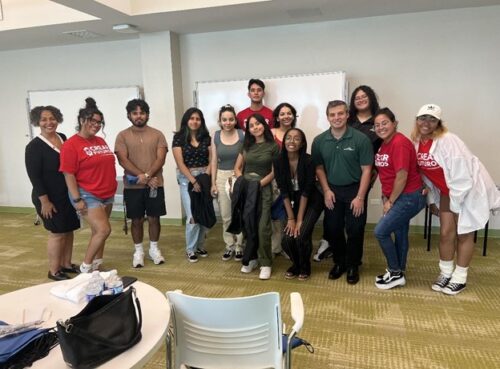At the end of every semester SUNY Old Westbury’s Amelie A. Wallace Gallery hosts an exhibit showcasing the works of art students working towards their Bachelor of Arts degree. This semester’s exhibit ran from December 12 to 16 and featured the works of students Gianni Budes, Kristel Carbajal, Pinliang Chu, Nicolos D’Amato, Ben Goodness, Kayla Hancock, Semrah Hussaini, Yasmine Kaba, Bre’Anna McQueen, Dimitri Ramos, Gianna Santoro, Maddy Talbot, and Jade Thompson.
Each student presented a collection of art pieces that centered around an idea that meant something to them. This semester’s student artwork showcases the interesting dichotomy found in artists’ approach to their material. Unfortunately, for the sake of brevity, not every student’s work will be discussed.
An opening reception was held on December 14 and the gallery was packed with students, faculty, and relatives of the artists. On the first floor were the works of Semrah Hussaini, Bre’Anna McQueen, Gianna Santoro, and Jade Thompson.
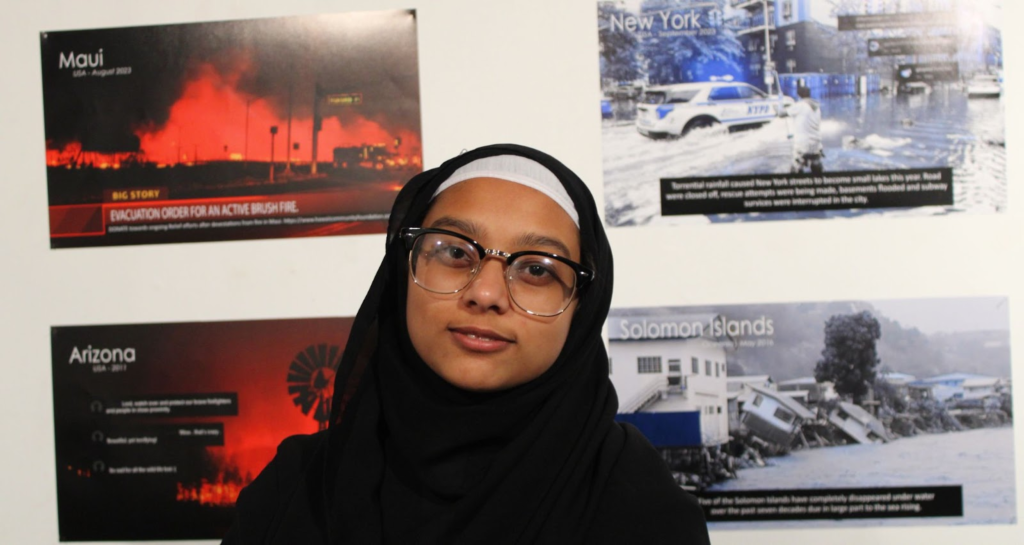
Santoro’s and Hussaini’s pieces were built around global warming, but expressed the general idea in different ways. Santoro designed creatures that represent the destructive aspects of environmental change, while others are “trying to save their environment, and themselves,” Santoro says.
Hussaini’s digital works used real news images of wildfires and floods from all over the world. By increasing the saturation in the images, Hussaini shows both ends of the climate spectrum and the larger-than-life intensity of the effects of climate change.

McQueen’s work is built around African-American hairstyles. While these might appear to be just simple charcoal sketches, when one looks closer, they can see the intricate texture of the hair. A time consuming process to create the impressive patterns, McQueen said she used “a light [charcoal], then [she] went over it with a darker black charcoal.” She then went over it all with white charcoal “to show the scalp and frizz.”
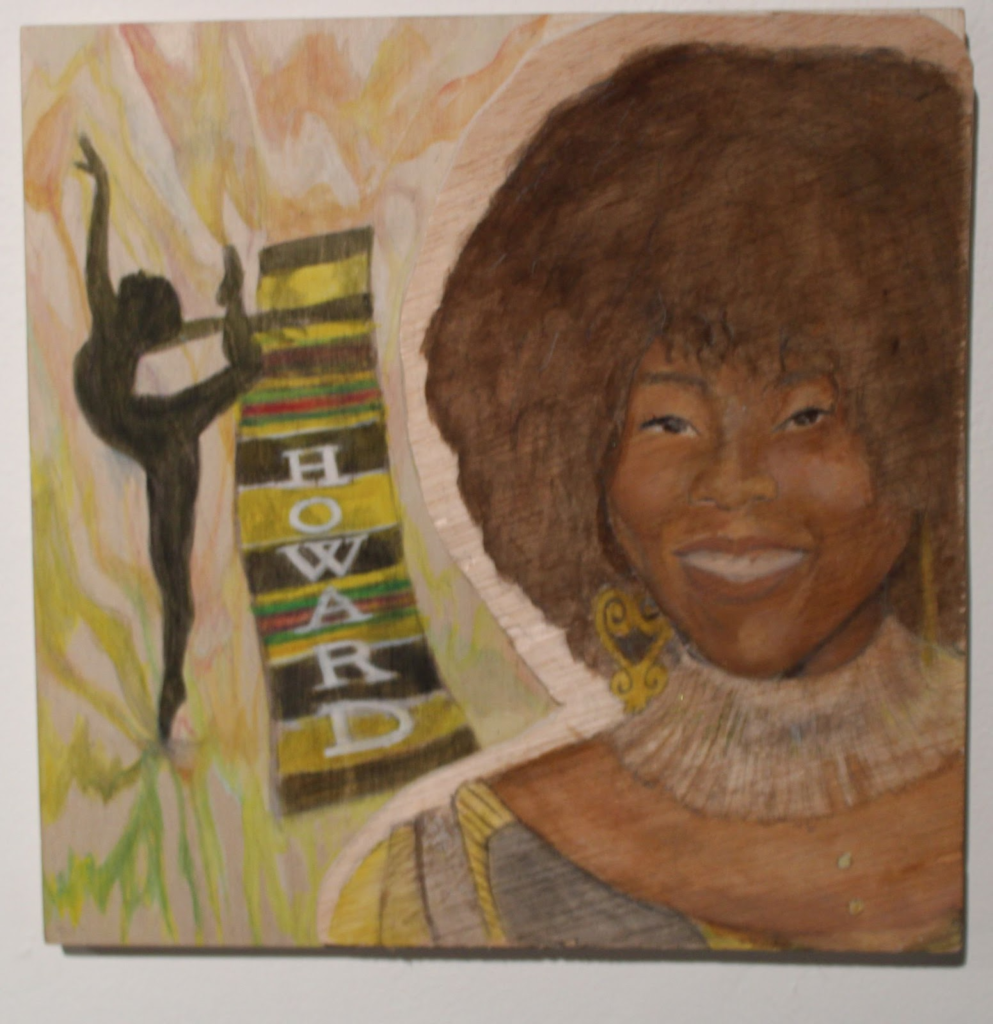
Jade Thompson’s wood block portraits are well-crafted odes to everyday people and their goals in life. Using wood, Thompson shaved around a portrait of a person, then drew expressions of what they are striving for in life whether it’s a firefighter or a dancer. According to her artists’ statement, “I am interested in portraying happiness and perseverance to inspire others to navigate through life.” Human art is always welcome.
The main hall was host to the most impressive art of the whole exhibit. On display were works by Kristel Carbajal, Pinliang Chu, Nicolas D’Amato, Ben Goodness, Kayla Hancock, and Yasmine Kaba.
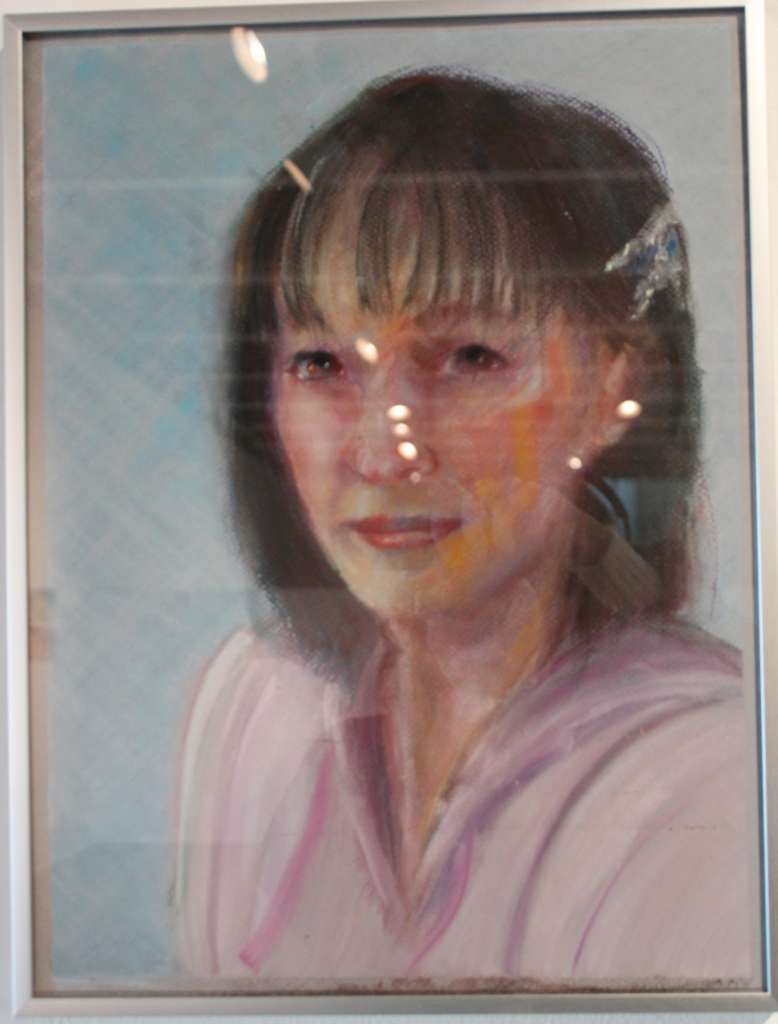
Possibly the greatest selection in the exhibit has to be Pinliang Chu’s family portraits. It is masterful on a technical level; the layered beauty of the pastel colors juxtapose the simple framing of these sentimental portraits. The most impressive, to me, is Self Portrait because of all the detail in the layered colors. It’s just beautiful work and difficult to convey such beauty through simple words or images.
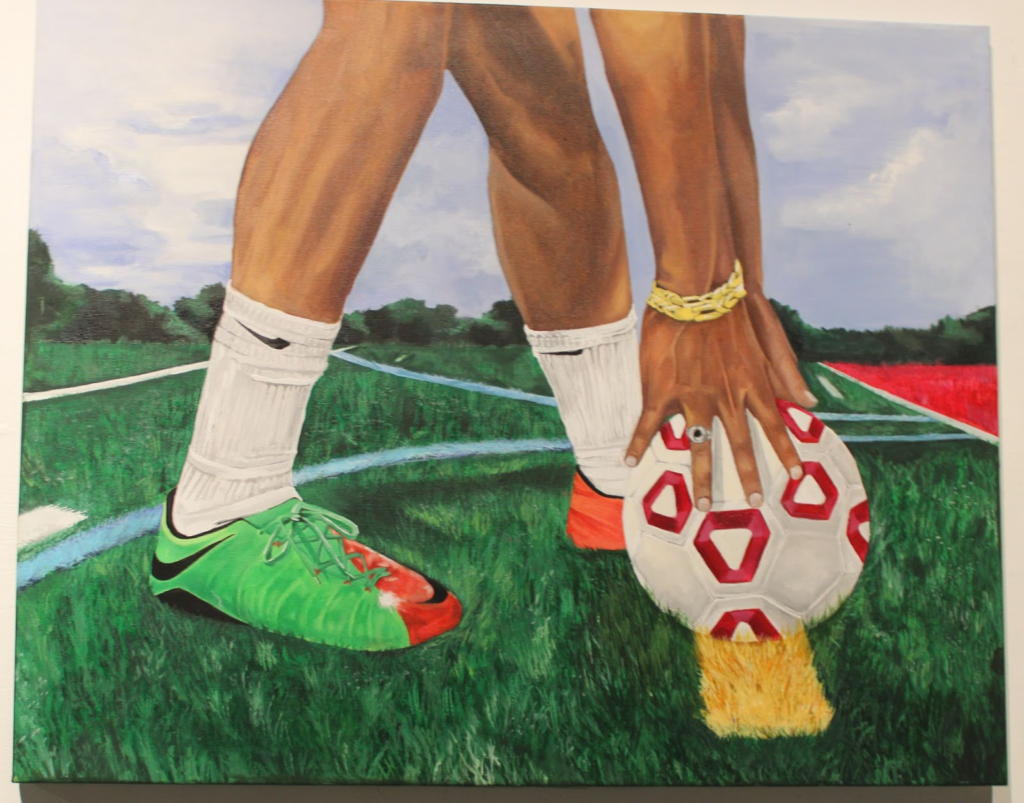
Kristel Carbajal’s paintings are snapshots of a soccer game. As per the artists’ statement, Carbajal used acrylic paints, which has helped her hone her skills in controlling the paint in areas like depth and tone. While admittedly repetitive, the works show an artist practicing, which is what college is for in the first place.
Kayla Hancock’s and Ben Goodness’ works focus on nature, specifically animals. Using scientific research, Hancock gives her artist’s estimation on what crabs, lizards, flies, bats and goldfish might see through paintings. The best of the collection is Fly, which shows the insect’s strange vision, composed of multicolored dots.
It originally started off with how humans see animals, specifically, “the idea of anthropomorphic animals,” Hancock says, which eventually morphed into how animals see the world. Hancock’s work is an example of what a good central idea can do; it gives the student enough wiggle room to create art that shows a mastery of the basics, but also allows them to challenge themselves.
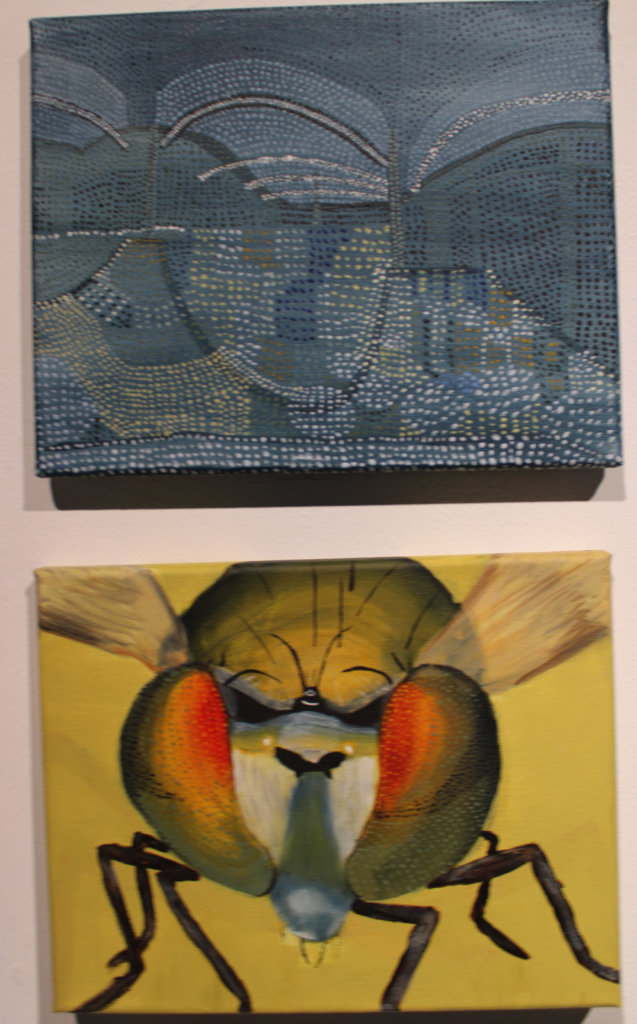
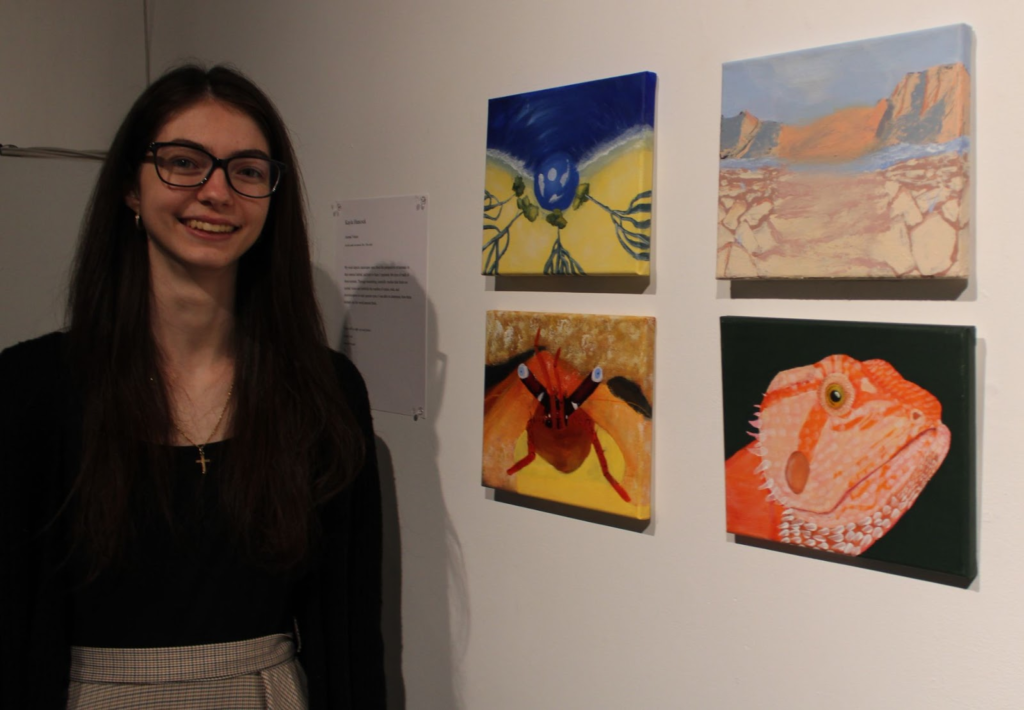
Goodness’ clay dioramas were cute depictions of endangered species that live in New York. From a rat to a sturgeon, Goodness uses different animals to show the difference in scale of their environment. What drew him to these animals was the fact that they’re endangered. “[These] are animals you don’t see, and that’s what’s interesting,” Goodness says.
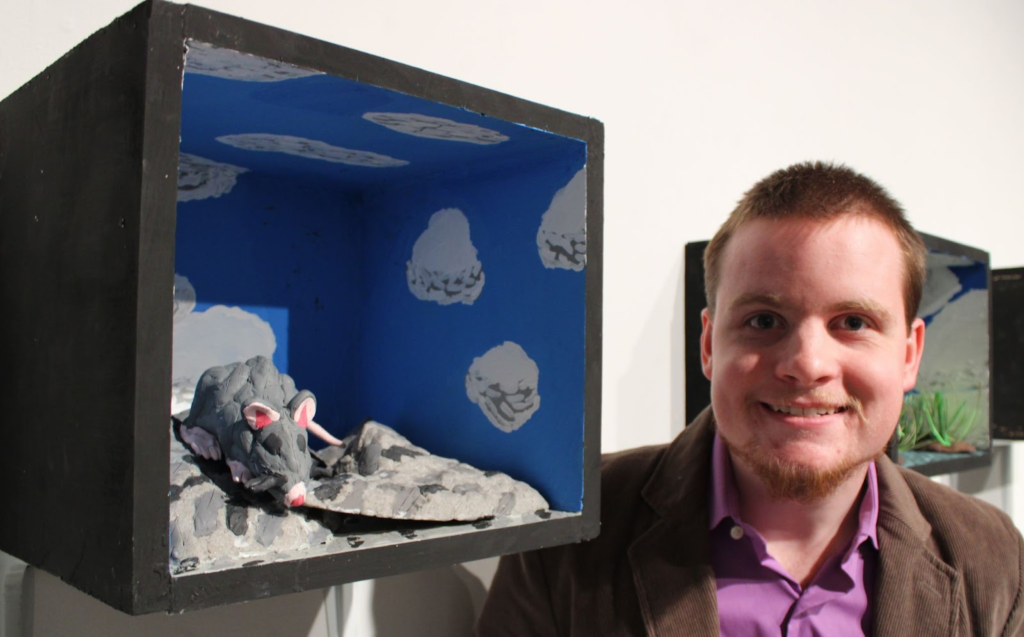
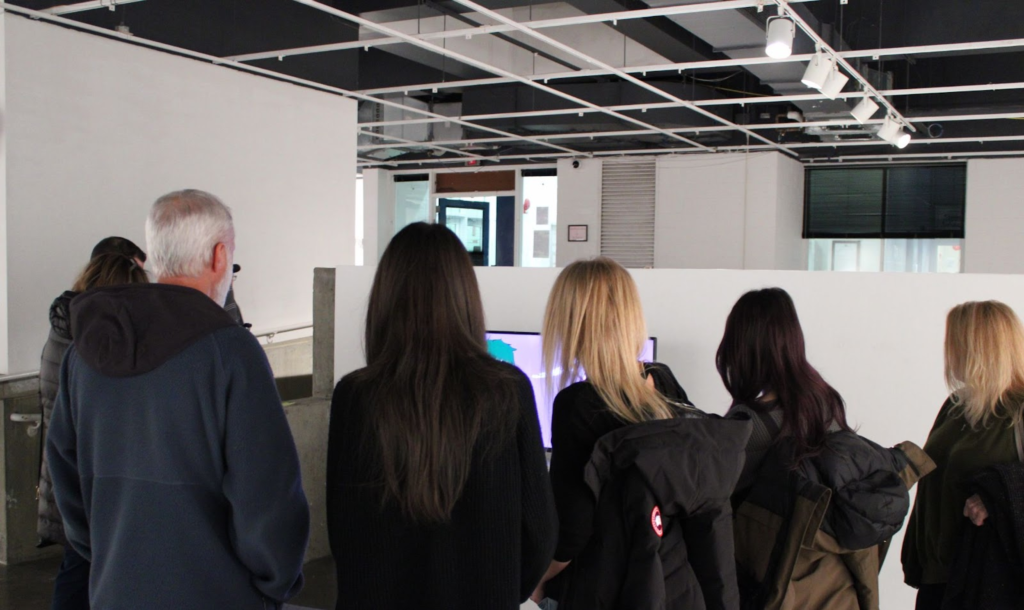
A prevailing motif in many of these pieces is the impact humans have on their environment and Nicolas D’Amato’s animation is no different. Inspired by the cult classic cartoonist Jhonen Vasquez, D’Amato’s short cartoon is about zombies who discover a human farm, a thinly veiled allegory for factory farming. In the cartoon, the zombies end up eating only cabbages (because they look like human heads, the cartoon notes). Funny and with the charm of old internet flash videos, D’Amoto’s art certainly stands out compared to the rest.
Continuing in the medium of digital art, Yasmine Kaba created an entire pantheon of heroes and villains. Inspired by comic artists like Jim Lee and Sean Murphy, Kaba has been practicing drawing “since middle school,” she says. Ceaselessly creative and ambitious, Kaba said she hopes to create an animation series on the internet.
What’s great about these exhibits is how it shows artists given a task. When asked to make something meaningful, some of these artists like Chu, Carbajal, and others, look to daily life: playing soccer, their family, hair styles, and people’s ambitions. Others, instead, want to do something a little more fantastical. D’Amato, Santoro, Kaba, and others are interested in portraying things beyond normal life, beyond and above reality. Both have merit, and both can test an artist.



